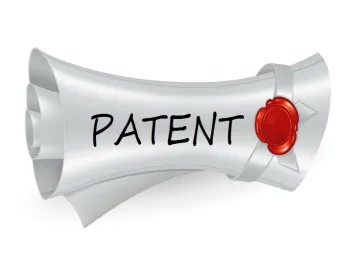The Federal Circuit’s decision in Gilead Sciences, Inc. v. Natco Pharma Ltd.[i] introduced even more confusion in an already confusing area of the law – namely obviousness-type double patenting. Obviousness-type double patenting (ODP) is a judicially created doctrine intended to prevent an improper timewise extension of patent rights by prohibiting the issuance, to a single entity, claims in a second patent which are not “patentably distinct” from the claims of a first patent. Claims are considered to not be patentably distinct from each other if one claim is anticipated or obvious in view of another claim in a separate patent. In Gilead, the Federal Circuit held that a later-issued patent can serve as an ODP reference against an earlier-issued patent where both patents issue from applications that are commonly owned and share common inventors. However, the rule handed down in Gilead appears deceptively simple – the determining factor whether a patent may be used as an ODP reference is the earliest expiration date. No weight is given to the filing dates, issue dates, priority claims, or patent term adjustment.
To overcome an ODP rejection during prosecution, an applicant can either establish that the challenged claims are “patentably distinct” from the reference claims or file a terminal disclaimer to disclaim any portion of the 20-year statutory term of the challenged patent/application that extends beyond the expiration date of the reference patent. To file a terminal disclaimer, the reference patent and the rejected application must be commonly-owned at the time of filing of the terminal disclaimer, and throughout the term of both patents. However, a terminal disclaimer cannot cure every ODP issue. Conflicting patents that have at least one common inventor can be at risk for an ODP challenge, and a terminal disclaimer may not be feasible if the underlying patent is not commonly owned.[ii]
Terminal disclaimers are not a panacea when it comes to ODP however, and this is especially true in the life sciences where many applications accumulate patent term adjustment (PTA) during prosecution. In Magna Electronics, Inc. v. TRW Automotive Holdings Corp.[iii] the district court used an earlier-expiring patent (the patent without PTA) as an underlying ODP reference to invalidate the claims of the later-expiring patent (the patent with PTA). This, in effect, eliminated the statutory PTA of the “later-expiring” patent.
With potential landmines at each turn, what should patent practitioners do to best protect against ODP issues? Perhaps most important is to obtain safe harbor protection from ODP challenges. Thus, practitioners should draft their claims in parent applications to trigger a robust restriction requirement since 35 U.S.C. § 121 protects claims in a divisional application from ODP rejections. Continuation applications should then be filed, or even allowed to issue, only when all of the ramifications are taken into account. This is especially important if one (or more) patents at risk for an ODP challenge has significant PTA.
Another scenario that comes up frequently during prosecution in biopharma is timing of prosecuting narrow versus broader scope claims. Timing here is important because broad claims may be at risk for an ODP challenge based on the narrow scope claims. Therefore, applicants should consider filing strategies where narrow claims in the first patent of a family are pursued, and broader claims are pursued in a subsequent continuation. Pursuing narrow claims in the first (parent) application may act as a safeguard because the second (continuation) application may not be applicable as an ODP reference against the parent because those broader claims may not anticipate or render obvious the narrower claims.
While ODP was originally created to safeguard against patents that were mere obvious variants of one another, the growing body of precedent in this area further limits a patent owner's ability to adequately protect their invention. It will be interesting see if the Federal Circuit addresses the Magna Electronics question and determines whether the judicially-created doctrine of ODP should take precedence over the statutory grant of PTA.
[i] 753 F.3d 1208 (Fed. Cir. 2014)
[ii] In re Hubbell 709 F.3d 1140, 1145 (Fed. Cir. 2013)
[iii] No. 1:12-cv-654 (W.D. Mich., 10 December 2015)





 />i
/>i

